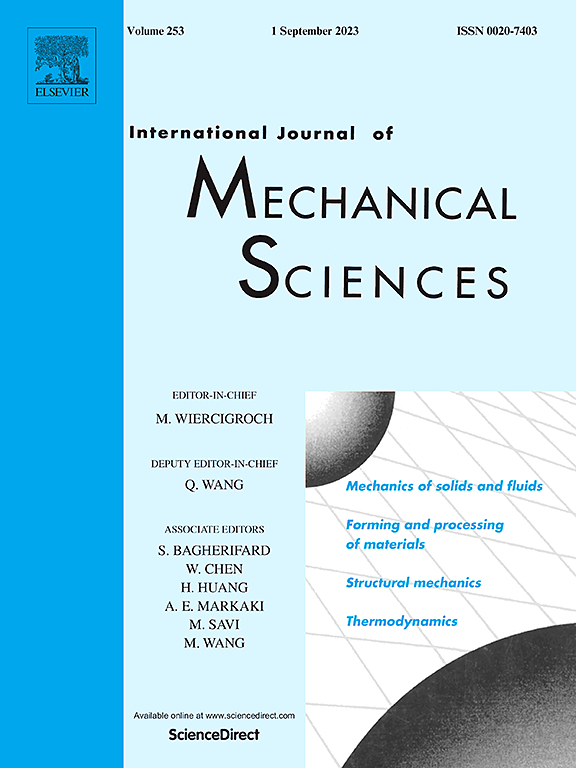Prediction model for surface shape of YAG wafers in wafer rotational grinding
IF 7.1
1区 工程技术
Q1 ENGINEERING, MECHANICAL
International Journal of Mechanical Sciences
Pub Date : 2025-02-01
DOI:10.1016/j.ijmecsci.2025.109982
引用次数: 0
Abstract
Yttrium aluminum garnet (YAG) wafers are essential for thin disk lasers, requiring extremely low peak-to-valley (PV) values after thinning. Wafer rotational grinding is an efficient thinning method for controlling the surface shape, minimizing the time required for polishing. However, the high hardness of YAG increases grinding forces, which can deform the grinding wheel and compromise the surface shape. This paper presents a novel predictive model for the surface shape PV value of ground YAG wafers to address this issue. Initially, a grinding force model is established by considering material elasticity rebound and the size effect of material hardness. Subsequently, the wheel deformation induced by grinding force is calculated and the results are confirmed with finite element simulation. Furthermore, the effect of wheel deformation on the inclination angle is investigated, and the PV value of the ground surface is calculated. Finally, grinding tests are used to validate the suggested model, and the impact of the grinding settings on the PV value is investigated. The results demonstrate that the PV value of the wafer increases with higher grain size and wheel rotational speed, but decreases with higher workpiece rotational speed and feed rate. Additionally, wafers ground with resin-bond wheels shows lower PV value compared to those ground with vitrified-bond wheels. The experimental results align with theoretical predictions, indicating that the proposed model is accurate. This work improves the understanding for grinding surface shape prediction in wafer rotational grinding and provides valuable guidance for optimizing grinding parameters for YAG wafers.

求助全文
约1分钟内获得全文
求助全文
来源期刊

International Journal of Mechanical Sciences
工程技术-工程:机械
CiteScore
12.80
自引率
17.80%
发文量
769
审稿时长
19 days
期刊介绍:
The International Journal of Mechanical Sciences (IJMS) serves as a global platform for the publication and dissemination of original research that contributes to a deeper scientific understanding of the fundamental disciplines within mechanical, civil, and material engineering.
The primary focus of IJMS is to showcase innovative and ground-breaking work that utilizes analytical and computational modeling techniques, such as Finite Element Method (FEM), Boundary Element Method (BEM), and mesh-free methods, among others. These modeling methods are applied to diverse fields including rigid-body mechanics (e.g., dynamics, vibration, stability), structural mechanics, metal forming, advanced materials (e.g., metals, composites, cellular, smart) behavior and applications, impact mechanics, strain localization, and other nonlinear effects (e.g., large deflections, plasticity, fracture).
Additionally, IJMS covers the realms of fluid mechanics (both external and internal flows), tribology, thermodynamics, and materials processing. These subjects collectively form the core of the journal's content.
In summary, IJMS provides a prestigious platform for researchers to present their original contributions, shedding light on analytical and computational modeling methods in various areas of mechanical engineering, as well as exploring the behavior and application of advanced materials, fluid mechanics, thermodynamics, and materials processing.
 求助内容:
求助内容: 应助结果提醒方式:
应助结果提醒方式:


